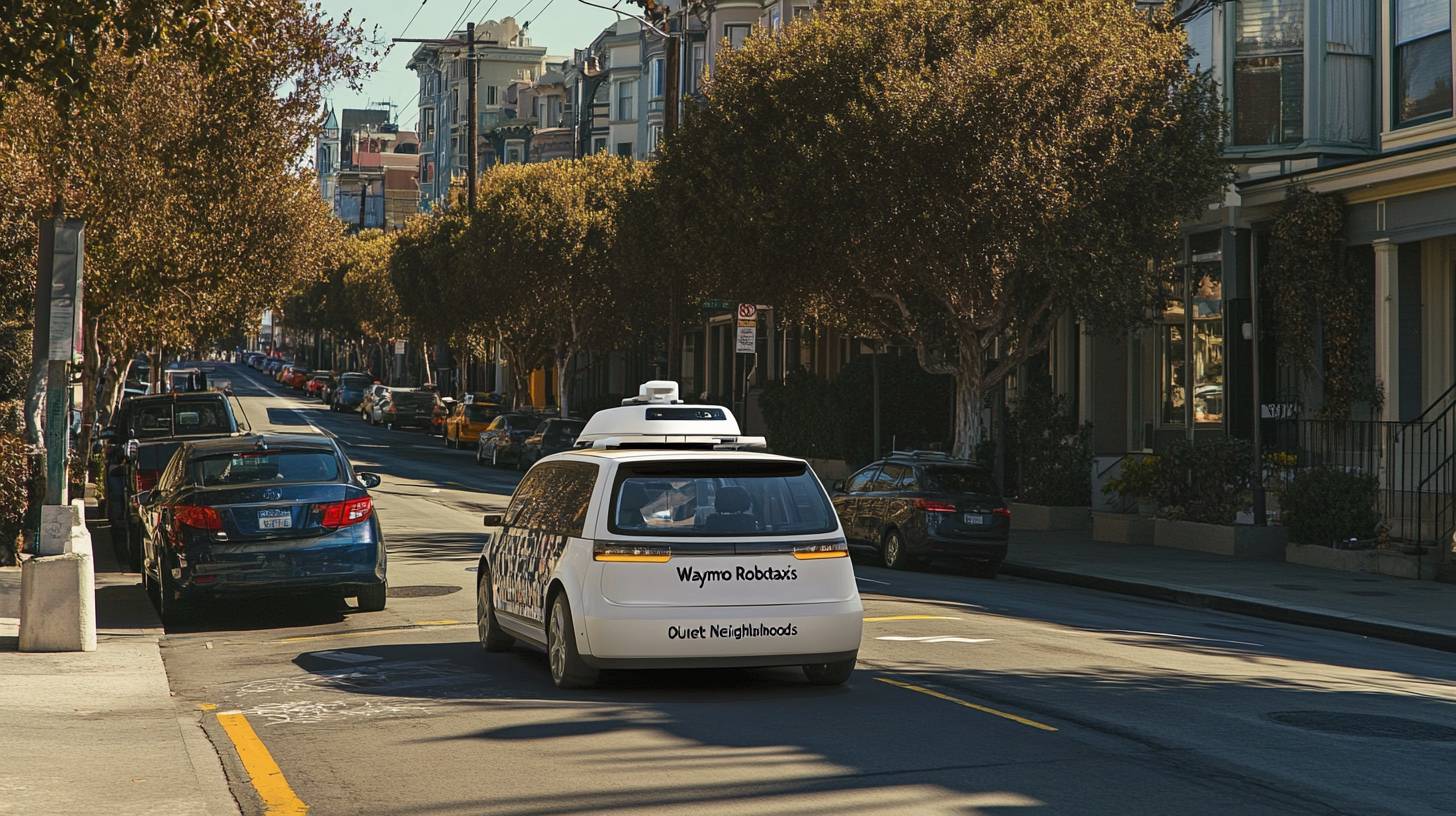
robotaxi issues in city settings
As we explore the current landscape of robotaxis, it becomes clear that the obstacles they encounter in urban settings are varied. Although advancements in the technology behind autonomous vehicles have been notable, the real-world situation is considerably more intricate. Urban locales, characterized by their dense populations, complex road systems, and unpredictable human actions, pose a distinct array of challenges that robotaxis must contend with.
A primary concern is the current infrastructure in urban areas, typically not designed for autonomous vehicle integration. Traffic lights, road signage, and zebra crossings are all built for human drivers, and modifying these systems to cater to autonomous vehicles is an expensive and prolonged endeavor. In addition, the erratic nature of human drivers and pedestrians introduces further complexity. Autonomous vehicles must predict and respond to the often unpredictable behaviors of humans, which is no easy task.
Another major hurdle is the incorporation of robotaxis into the current transportation framework. In cities already burdened by public transport issues, the addition of autonomous vehicles could worsen traffic rather than reduce it. The prospect of robotaxis increasing road traffic, especially during rush hours, is a factor that cannot be ignored. Furthermore, the way robotaxis will collaborate with other transportation modes, such as buses, trams, and bicycles, remains largely unresolved.
Safety is undoubtedly a critical issue. While autonomous vehicles are created to minimize accidents attributable to human error, they are not without flaws. The technology is still evolving, and there have been cases where robotaxis have misinterpreted their environment, resulting in incidents. The challenge is to guarantee that these vehicles are not only secure but also perceived as safe by the public. Without public confidence, the broad acceptance of robotaxis will be a formidable challenge.
Lastly, noise pollution is a concern, as recently demonstrated in San Francisco. The persistent honking of robotaxis in residential neighborhoods serves as a stark reminder that even the most sophisticated technologies can have unintended side effects. Urban regions are already loud, and the introduction of autonomous vehicles could lead to increased noise levels, particularly in populated areas.
While the potential advantages of robotaxis are evident, the challenges they encounter in urban settings are considerable. Tackling these challenges will demand a unified effort from both public and private sectors, along with a readiness to adapt and innovate. The journey toward a future where robotaxis are commonplace on our streets is still lengthy, with many obstacles to navigate along the way.
insights for Australia from San Francisco’s experience
The scenario in San Francisco provides a cautionary perspective for Australia as it considers integrating autonomous vehicles into its urban environments. The obstacles faced by Waymo in the SoMa district highlight the necessity of contemplating the broader ramifications of introducing robotaxis, especially in tightly populated regions. While the technology may be state-of-the-art, its practical implementation can unveil unforeseen issues that may disrupt neighborhoods and diminish public trust.
A critical lesson for Australia is the importance of comprehensive testing and community involvement prior to launching autonomous vehicles on a substantial scale. The noise disturbances caused by Waymo’s robotaxis in San Francisco underscore the necessity for a comprehensive approach that encompasses more than just the technology’s technical aspects. Australian cities, with their distinctive urban configurations and diverse populations, will need customized solutions that consider not only the operational effectiveness of robotaxis but also their effect on residents’ living conditions.
Additionally, the incident in San Francisco acts as a reminder that even minor oversights in the design and deployment of autonomous vehicles can result in significant consequences. Here, a seemingly minor feature—honking to avoid low-speed collisions—led to significant disturbances in a residential area. For Australia, this emphasizes the necessity for stringent testing in real-world conditions, coupled with continuous monitoring and prompt response strategies to tackle issues that arise post-deployment.
Another realization for Australia is the critical need for regulatory oversight and collaboration between governmental agencies and private enterprises. The San Francisco experience indicates that local governments should be closely involved in planning and deploying autonomous vehicles to ensure alignment with broader urban development goals and to avoid inadvertently creating new challenges. In Australia, this could translate to establishing specific regulations that oversee the operation of robotaxis in residential areas while also setting standards for noise and environmental impacts that these vehicles must adhere to.
Lastly, the San Francisco situation emphasizes the necessity for public education and transparency. The backlash against Waymo’s robotaxis stemmed in part from residents’ misunderstandings about the technology and its potential advantages. For Australia, it will be crucial to ensure the public is adequately informed about the capabilities and limitations of autonomous vehicles to foster the trust necessary for their successful incorporation into society. This may involve public consultations, educational outreach, and clear communication from both the government and companies involved in the development and deployment of robotaxis.
As Australia moves toward the future of transportation, the insights from San Francisco should act as an invaluable resource. While the potential advantages of autonomous vehicles are substantial, their effective integration into urban settings will require meticulous planning, thorough testing, and a commitment to addressing community concerns.

